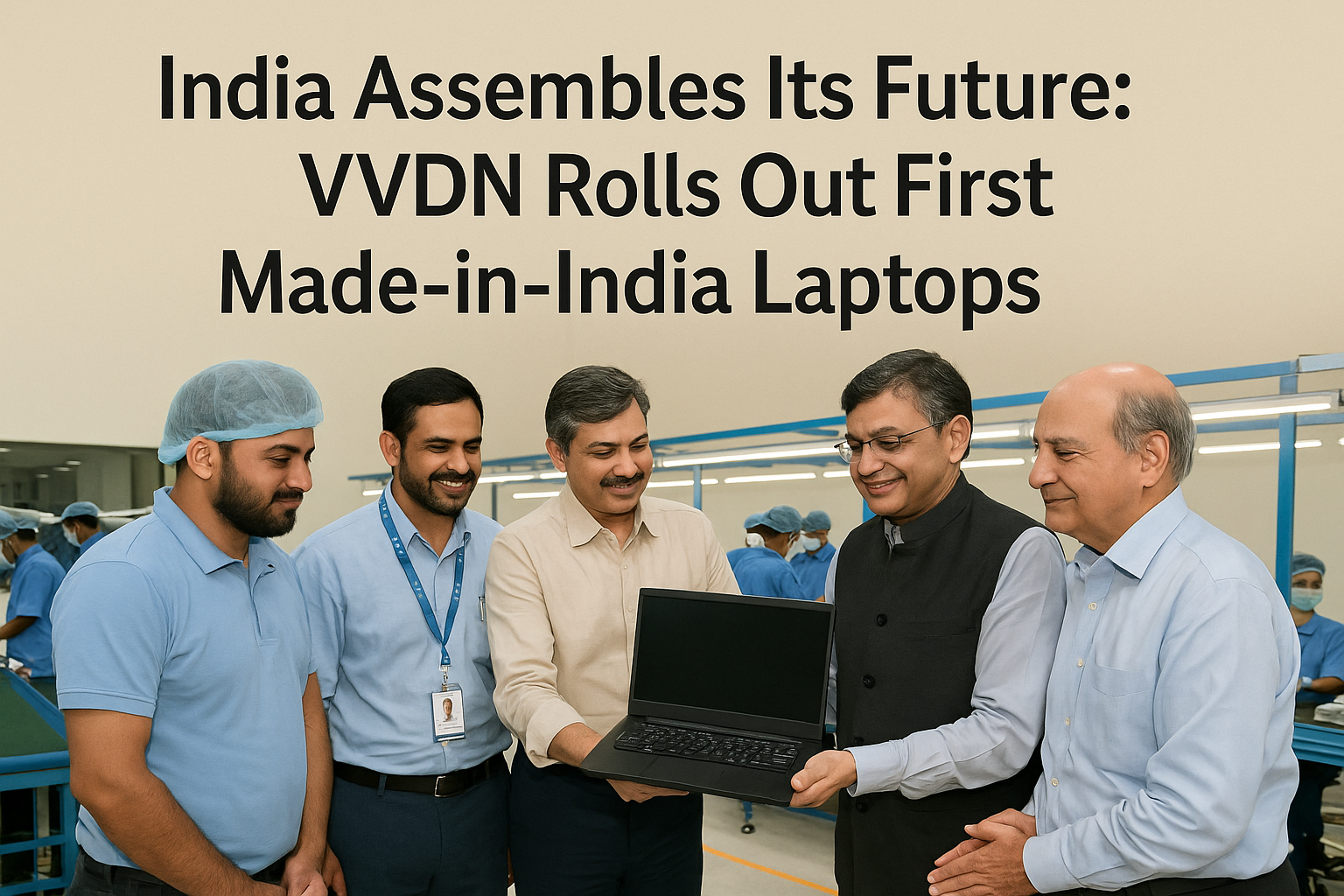
In a powerful testament to India’s rising technological self-reliance, VVDN Technologies, a homegrown electronics design and manufacturing firm based in Haryana, has rolled out its first line of Made-in-India laptops from its Manesar facility. The move comes at a crucial time when India is doubling down on domestic manufacturing, and this milestone adds significant weight to the ‘Aatmanirbhar Bharat’ (Self-Reliant India) vision championed by the central government.
The new assembly line inaugurated on Friday (18th April, 2025) by Union IT Minister Ashwini Vaishnaw isn't just a ribbon-cutting ceremony—it’s a signal flare announcing India’s bold entry into high-tech electronics production. More than just assembling parts, VVDN has created an ecosystem of value addition, designing and manufacturing critical components in-house. As CEO Puneet Agarwal noted, over 50% of a laptop’s cost will now directly contribute to India’s domestic revenue. That’s not just localisation—it’s transformation.
India’s dependence on imported electronics, especially from China, has long been a strategic vulnerability. But with initiatives like VVDN’s, that tide is visibly turning. With nearly 40% of the manufacturing value being captured domestically already, and the company aiming to push that beyond 50%, the seeds of India’s laptop independence are being sown right now.
This bold step by VVDN coincides with the Indian government’s ₹27,000 crore component incentive scheme launched on March 28, 2025. The scheme offers up to 10% turnover-based incentives and 25% capital expenditure support for electronics firms that commit to local manufacturing. With such policy tailwinds, companies like VVDN aren’t just building gadgets—they’re building the backbone of India's future tech industry.
Minister Vaishnaw summed it up succinctly: “This move can give us a big advantage compared to other countries, which don’t have this much design talent.” It’s a proud moment that underscores India’s transition from an assembly economy to a design-led manufacturing power.
Beyond symbolic value, the VVDN milestone carries significant economic promise. It brings jobs, skills, and domestic capability that can ripple through the ecosystem—from chipset makers and software developers to logistics and education. India, once a passive consumer of Western and Chinese tech, is now emerging as a confident producer.
But most importantly, this development signals that "Make in India" is no longer a political slogan—it’s a tangible, operational, and profitable reality.

